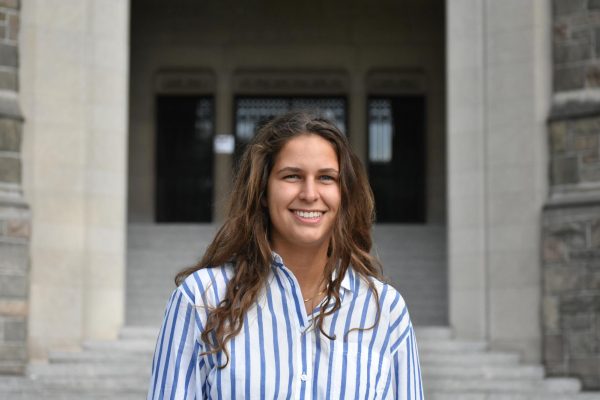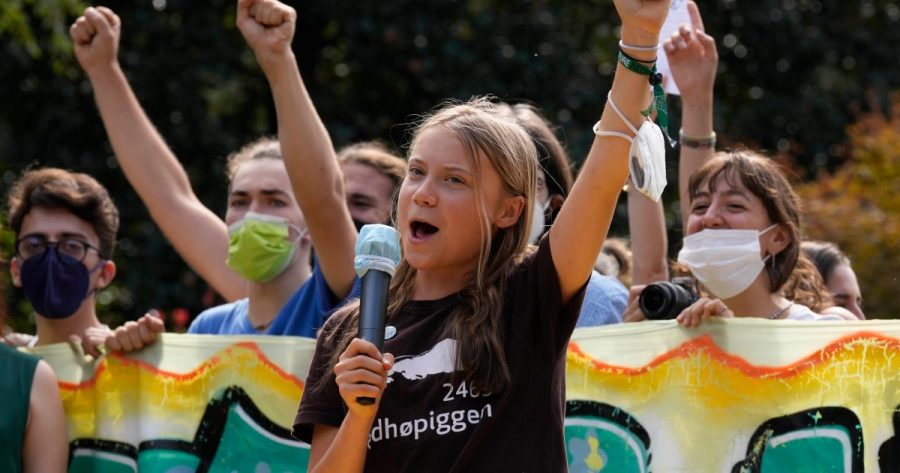Fridays for Future Leads to Symbolic Change
Fridays for Future, Greta Thunberg’s weekly climate justice campaigns, are not yet successful in instituting any significant governmental change. However, they are giving young people something that might be equally important: a sense of hope and empowerment.
Fridays for Future was born in 2018 when Thunberg, a then 15-year-old Swedish teenager, “sat outside Swedish Parliament every school day, demanding urgent action on the climate crisis” in the weeks leading up to the Swedish election, according to the movement’s webpage. Before long, countless others joined Thunberg’s resistance.
Thunberg launched a global campaign for young activists who wanted to shake politicians out of their complacency and enact meaningful change surrounding climate justice. The response to Thunberg’s call-to-action was unprecedented; millions of students and activists protested in hundreds of locations worldwide.
Young people are the future of the climate change movement because “the younger generation no longer wants to wait for politicians to act — they want to take responsibility for their future into their own hands,” says Mathias Albert, German professor and global governance researcher.
The global goals of the Fridays for Future campaign are to “Keep the global temperature rise below 1.5 °C compared to pre-industrial levels … Ensure climate justice and equity … Listen to the best-united science currently available.” However, “none of [Fridays for Future’s goals] has been clearly achieved, but they have had an effect on some political decisions and political discourse,” explains Sebastian Haunss, a German-based political scientist.
Fridays for Future reached its peak in 2019, with millions continuing to protest for decisive solutions to the climate crisis. Unfortunately, the pandemic then derailed that momentum.
Though the movement held some online protest events, the attendance and enthusiasm did not match those of the in-person events that occurred in 2019. The first in-person Friday for Future events since the beginning of the pandemic occurred on Sept. 24. They were localized in Germany, and although there were 1,500 protests worldwide, the turnout was nowhere near those of 2019.
There seems to be a superficial quality to the Fridays for Future campaign and those who participate in it. True and complete dedication like Thunberg’s is rare. At least from what I see on my social media feed, a lot of people will attend one rally at most and maybe post a “Respect Our Mother Earth” graphic along with a slew of sunset pictures from their most recent vacation.
In addition, I noticed that most think-pieces and academic articles written on the Fridays for Future campaigns are by European news publications and professors. This could be due to a variety of factors.
Firstly, American activists may be more focused on putting out fires more symbolic than the increasing wildfires across America. This includes continuing protests around the Black Lives Matter movement and recent nationwide protests against Texas’s new abortion ban. The Fridays for Future campaigns need to improve their publicity strategy. The recent protests in the U.S. did not make as many headlines as those in 2019.
Secondly, I think Americans have become complacent alongside their politicians. Throughout Donald Trump’s presidency, there was a glaring social issue being overlooked or antagonized every week. People responded passionately to this in record numbers.
Now, with a Democrat in the executive branch, some think that their work is done, even though there has not been any substantial change, only meaningless rhetoric. The Financial Times recently reported that “there is no doubt that Biden wants to do the right thing. But he keeps encountering reasons to postpone the reckoning.”
Despite the goals of the movement and the awareness it brings to the climate crisis, the most significant achievement of Fridays for Future is the way it has been able to inspire an entire generation of activists. As the title of Thunberg’s book proclaims, “No One is Too Small to Make a Difference.”
Fridays for Future unites young people worldwide toward a common goal, which is incredibly empowering. The notoriety and early success of the campaign inspired a lot of kids while also giving them a community where their fears for the future are taken seriously. This is not a feeling that will fade over time.
Thunberg and her campaign have given young people an outlet to express their frustration at agencies that have never taken them seriously. Jerome Foster II, the youngest member of the White House Environmental Justice Advisory Council, said at a recent protest, “now we’re being taken seriously, we have a seat at the table, we’re gonna make sure that everyone in that table [understands] the pressing urgency and [takes] action.”
Maybe the most significant impact of Fridays for Future has not been on the future of the planet but on the future generations who inhabit it.
Nicole Braun, FCRH ’24, is undecided from Saddle River, N.J.

Nicole Braun is a senior from Saddle River, N.J. and she is thrilled to be a member of Volume 105! Her love for writing and editing led her to begin writing...










































































































































































































